TL;DR
Start with a 12–18 inch gravel strip under the lower windows to protect light and masonry, then add window boxes, a 36–48 inch primary path, and 3–5 shade-tolerant plant groups for structure. Skip ivy; choose natives like serviceberry, redbud, hellebores, hostas, and ferns for a low-maintenance, pollinator-friendly front yard.
3–5 hours: Most north-facing city yards get partial shade—design for it from day one
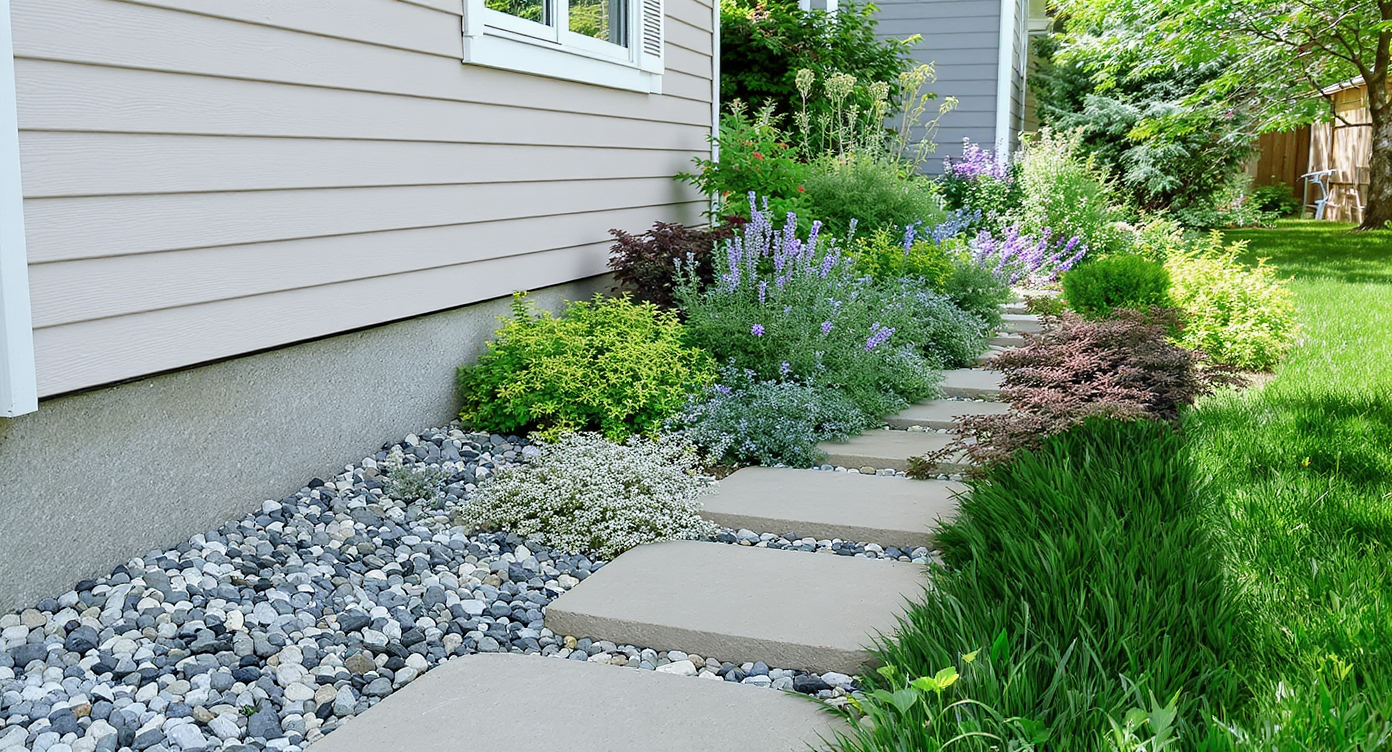
Protect basement windows and add curb appeal with gravel strips and layered shade plants.
North-facing landscaping ideas thrive on smart hardscaping design and shade-first plant palettes. For a small front yard, protect your basement windows with a 12–18 inch gravel or paver strip, layer in a 36–48 inch walkway, then plant 3–5 shade-loving groups for four-season curb appeal. Try your own exterior layout instantly on ReimagineHome.ai: https://www.reimaginehome.ai/?utm_source=blog At a glance: - Pathway width: 36–48 inches (primary), 24–30 inches (secondary) - Window protection: 12–18 inch gravel/paver strip along the façade - Small tree size: 12–18 feet mature height for tight urban lots - Lighting: 2700–3000 K for warm, architectural accents - Soil: Test first; amend with compost to 6–8 inches depth - Ivy: Avoid self-clinging vines; use trellised climbers instead
50–70%: Low-maintenance front yards lean on hardscaping and natives for curb appeal

Low-maintenance yards prioritize hardscaping and native plants for lasting curb appeal.
Hardscape elements often make up 50–70% of low-maintenance yard budgets, and that balance especially suits a compact, north-facing lot. Start by establishing grades and edges—set a slight slope (1–2%) from the house to the sidewalk, extend the downspout with a splash block or an underground drain, and add a 12–18 inch gravel band under those lower windows to keep glass clean and light unobstructed. Plant structure comes next. In Zone 6b (St. Louis), a serviceberry or Eastern redbud sized to 12–18 feet at maturity adds four-season interest without swallowing the façade. Underplant with shade stars that handle city stress: hellebores (Lenten rose), hostas, evergreen ferns, heuchera, brunnera, Japanese anemone, and spring bulbs. If you crave groundcover instead of a lawn, microclover or a clover–fine fescue blend stays green, needs less mowing, and welcomes pollinators. Skip ivy. Self-clinging ivy is invasive in many regions and can damage brick, mortar, and old pipes. If you want vertical softness, add a narrow trellis for clematis or annual sweet peas; use stainless eye hooks and taut lines so vines climb the structure—not the wall. Foundation planting should respect light and the architecture. Keep anything directly in front of basement windows under 18 inches and spaced back by that gravel strip. Flank the façade with two small evergreens (e.g., dwarf yew or boxwood columns) at the “bookends,” then weave a loose, repeating ribbon of perennials toward the sidewalk for a modern garden design that still feels classic.
Anecdote
A neighbor once lifted a 10-gallon serviceberry into a tiny St. Louis front yard, saying, “I wanted spring blossoms, but not a tree that steals the light.” Three years later it topped out at 14 feet—just enough canopy for dapple without dimming the windows.
5 trends: Microclover, privacy planting, small-specimen trees, soft lighting, and rain-smart grading

Five key trends reshaping small north-facing yards in 2025 elevations and lighting.
5 trends are reshaping small front yard design in 2025—and they’re perfect for north-facing lots. - Microclover lawns: Microclover replaces or mixes with turf for a low-water, bee-friendly surface that stays green longer and needs fewer cuts. - Privacy planting under 6 feet: See-through hedges of inkberry, boxwood, or feather reed grass define space without walling off the street. - Small-specimen trees (12–18 feet): Serviceberry, redbud, or a compact Japanese maple give height to match a tall façade without shading windows. - Soft, warm lighting (2700–3000 K): Discreet path lights and a single uplight on the brick transform curb appeal after dark. - Rain-smart grading: A 1–2% slope and a shallow swale or rain garden near the downspout keep water away from the foundation and hydrate plantings. Affordable landscaping ideas that deliver: edge the walk with creeping thyme in the sunnier pockets, add a bench on a small stone pad, and finish with window boxes. For deeper dives, see our guide to low-maintenance hardscaping: https://www.reimaginehome.ai/blogs/low-maintenance-hardscaping?utm_source=blog and front yard design ideas for small spaces: https://www.reimaginehome.ai/blogs/small-front-yard-landscaping-ideas?utm_source=blog.
3 steps: Use ReimagineHome.ai to test window boxes, stone walkways, and shade gardens
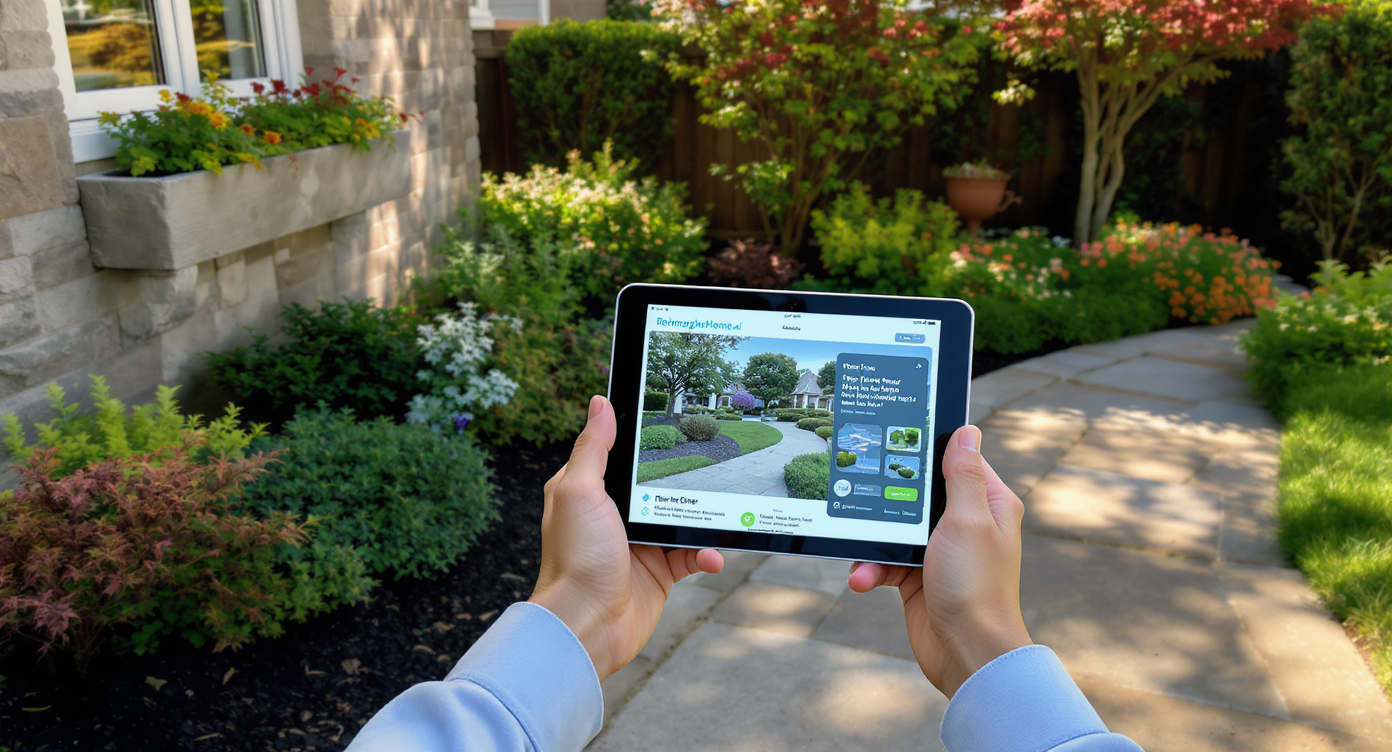
Test window boxes, stone paths, and shade gardens instantly with ReimagineHome.ai.
3 steps make ReimagineHome.ai your fastest route to a confident front yard makeover. - Upload a clear photo: The platform maps your façade so you can test landscaping ideas—window boxes, a stone patio pad, a curved walkway, or a parterre—before you plant. - Drag-and-drop materials: Compare hardscaping design options like stone patio pavers, brick soldier-course edging, and gravel textures. Toggle plant palettes tuned to shade: hellebores, hostas, ferns, hydrangeas, and brunnera. - Iterate lighting and height: Preview 2700–3000 K path lights, set tree maturity at 12, 15, or 18 feet, and confirm that basement windows stay clear. Pro move: Export two concepts—formal symmetry (boxwood edging, paired columns) and natural drift (looser perennials, asymmetrical tree). Share with a partner or contractor to align budget and phasing. Explore outdoor lighting design basics here: https://www.reimaginehome.ai/blogs/outdoor-lighting-design-basics?utm_source=blog.
2 case studies: A St. Louis stoop and a skinny side yard become outdoor rooms
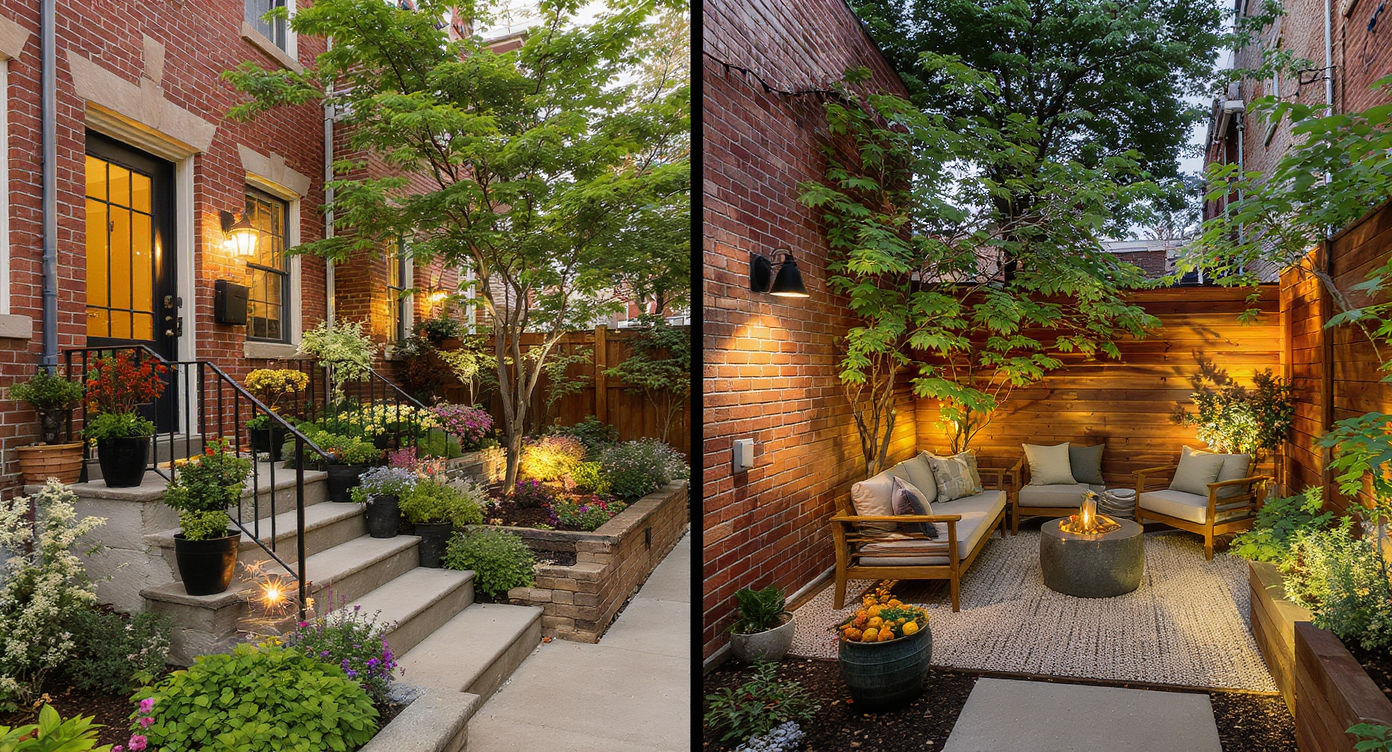
Small urban yards transform into inviting outdoor rooms with smart design and lighting.
2 real-world makeovers show how small urban fronts can carry big personality. - St. Louis stoop, north-facing: A homeowner started with a 14-inch gravel strip, then added three iron window boxes filled with trailing lamium, white impatiens, and chartreuse heuchera for season-long color in shade. A 42-inch-wide straight walk was softened by a 5-foot-diameter stone pad with a bistro bench. Structure came from a single-serviceberry, underplanted with hellebores and evergreen ferns. The result: instant curb appeal and year-round texture with minimal upkeep. - Narrow side yard, partial sun: A renter-friendly fix used screw-in eye hooks and stainless lines to create a vertical trellis for clematis, avoiding wall damage. Creeping thyme and sedum edged a compact flagstone path (24 inches wide), leading to a small planter cluster. The microclover patch cut mowing to once a month in peak season and fed neighborhood pollinators. Micro-story: A homeowner in St. Louis turned a narrow side yard into a cinematic, stone-lined walkway. By fall, a single uplight on the brick and the serviceberry’s golden leaves made the smallest yard on the block the coziest after dark.
Visualization Scenario
Upload your façade to ReimagineHome.ai, set the path to 42 inches, drop in a 15-foot serviceberry, and add three iron window boxes. Toggle between gravel and brick soldier-course edging, then preview 2700 K path lights. Export both a formal boxwood concept and a looser fern-and-hellebore drift to compare curb appeal.
6 quick answers: North-facing, small-yard landscaping FAQs
6 quick answers help you move from blank slate to backyard makeover momentum. - What are the best plants for a north-facing front yard? Shade-tolerant perennials like hellebores, hostas, evergreen ferns, heuchera, brunnera, and Japanese anemone thrive; pair with a small tree like serviceberry or redbud. - How wide should my walkway be? Plan 36–48 inches for a primary path and 24–30 inches for secondary connections to benches or hose bibs. - Should I plant ivy on brick? No—avoid self-clinging ivy; it can damage masonry and become invasive. Use a freestanding trellis with clematis or annual vines instead. - How do I protect basement windows? Keep a 12–18 inch gravel or paver strip along the façade and limit plants in that zone to under 18 inches tall. - What low-maintenance lawn alternative works in small urban yards? Microclover or a clover–fine fescue mix stays green, supports pollinators, and needs less mowing. - What color temperature is best for outdoor lighting? Use 2700–3000 K for warm, flattering light on brick and planting. Reflective CTA: Ready to see it before you plant? Visualize your front yard ideas now: https://www.reimaginehome.ai/?utm_source=blog
36–48 inches: The right path width leads every great small-yard makeover
36–48 inches is the right width for your main path—and that single measurement unlocks flow in a tiny yard. From there, a 12–18 inch gravel band, a compact specimen tree, and 3–5 repeating shade plant groups create a cohesive front yard design. Keep hardscape simple, prioritize natives, and light it warmly. Then let ReimagineHome.ai show you exactly how window boxes, trellises, and plant heights will look before you commit. Alt: “North-facing small front yard with a 42-inch path, serviceberry, and layered hellebores, hostas, and ferns, visualized in ReimagineHome.ai.” Caption: “ReimagineHome.ai helps you test path widths, plant heights, and lighting on your actual façade.”
.svg)

.svg)

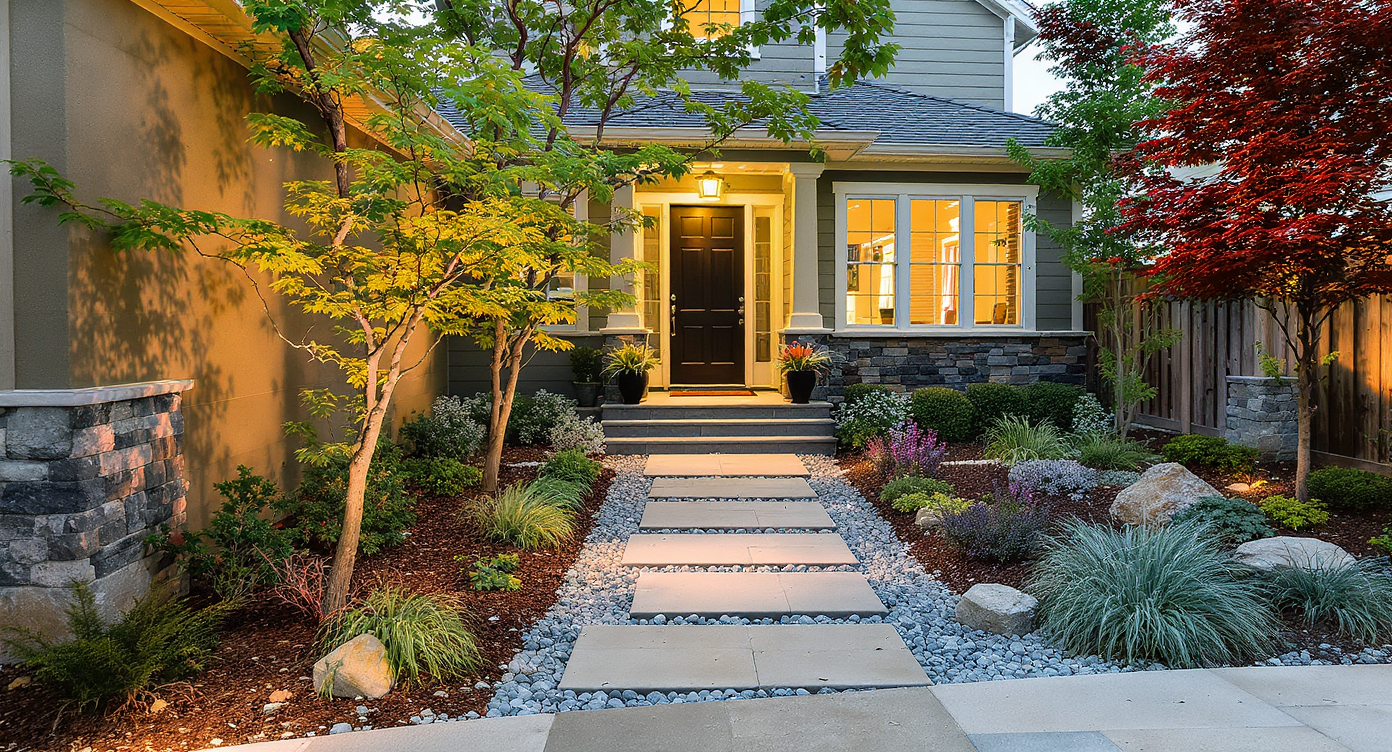
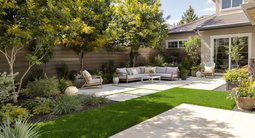
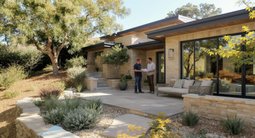


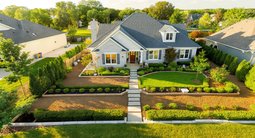
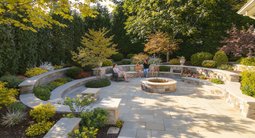


.png)